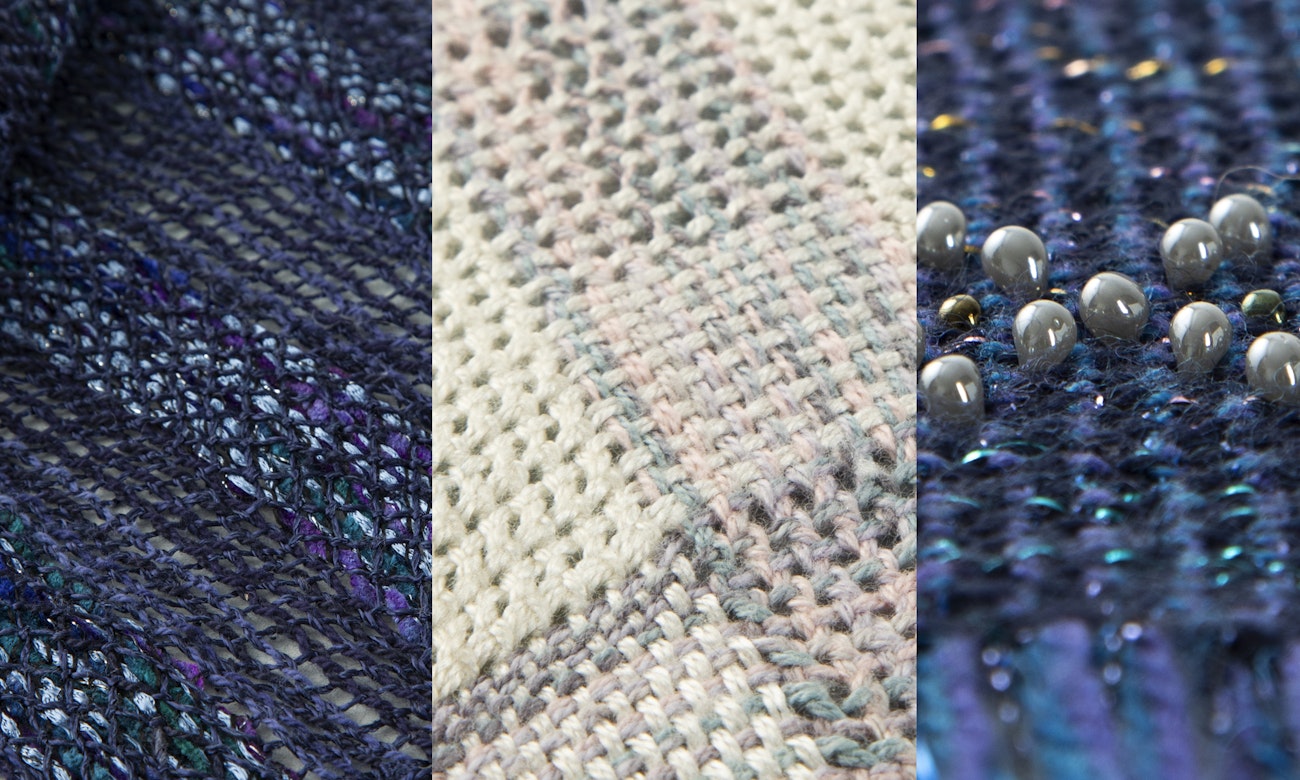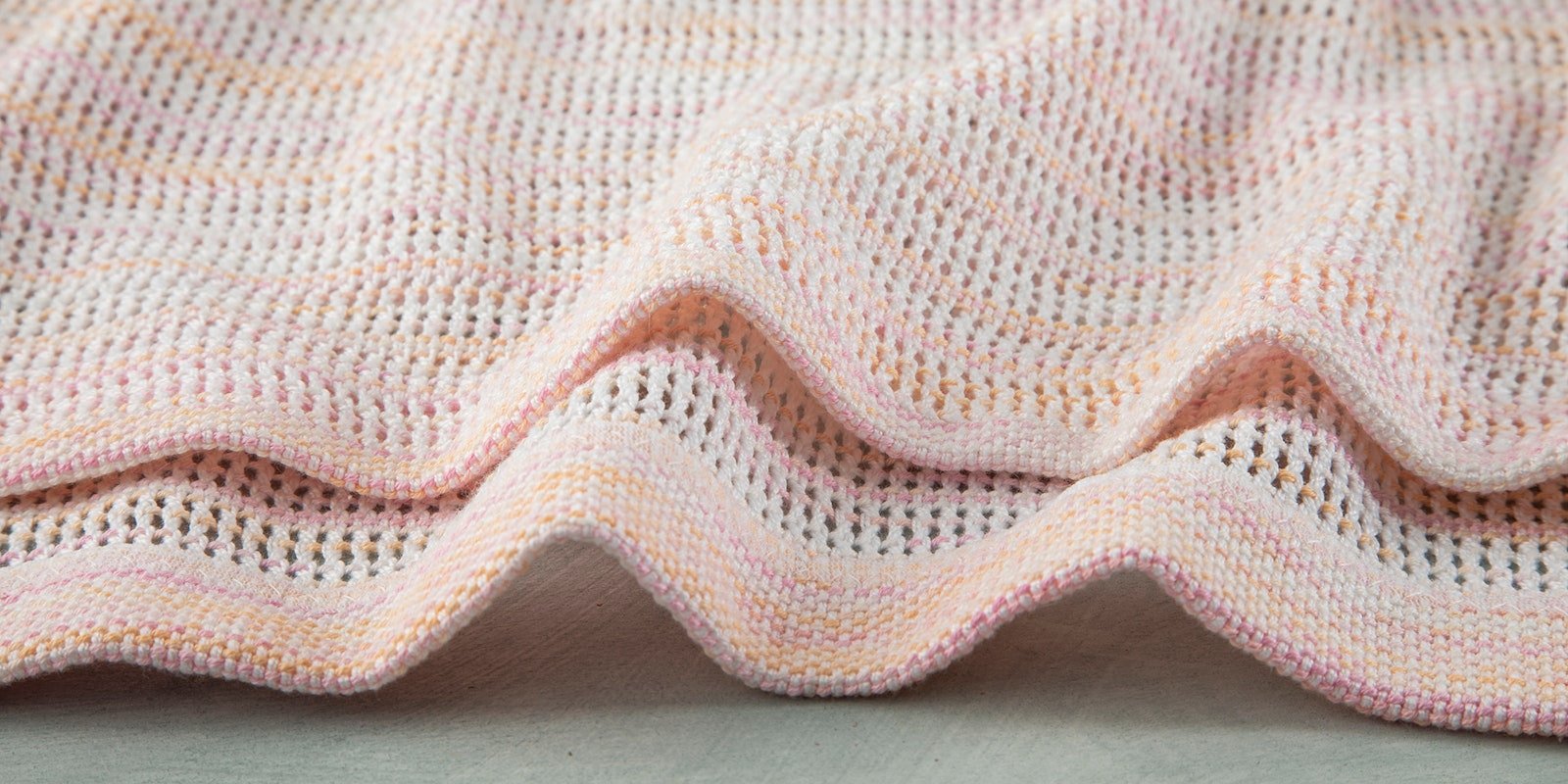Annette Swan Schipf wrote a great introduction to bead leno—what it is, and how to weave it—in the Spring 2025 issue of Handwoven. We take a brief look at the technique’s basics below; click the link to read the entire article. Then you can try it out by weaving Annette’s Spring Breeze Jacket, which is just the right weight for a cool spring day or evening.— Handwoven editors
Bead leno is a loom-controlled weave that produces lacy fabric by using beads to twist warp ends around each other, rather than requiring doups or a pick-up stick. The beads sit between your loom‘s heddles and reed, and set-up is quick and easy during threading.
Equipment and Materials
You can weave bead leno on any four-shaft loom (either jack or countermarch), as long as it has a large shed. Additional shafts give you block-weaving options, but they’re not required.
For the warp, any strong, smooth yarn with a consistent diameter will work. A yarn with some elasticity, such as cotton or wool, is best. Fuzzy or sticky yarns will be difficult to work with.
For the weft, you can use any type of yarn in the weft to achieve your desired effect—mohair, novelty, slub, what have you. This is where you can really have some fun!

Annette‘s Spring Breeze Jacket design is easy weaving, after just a little setup with beads.
I’ve used a range of bead types, including jewelry fittings, and they all produce similar sheds and good twists. What I’ve learned along the way is that the beads must be all the same size and perfectly smooth inside. For basic bead leno, you’ll need 1 bead for every 4 warp ends.
The warp ends act in pairs: 1 and 2 work together, and 3 and 4 work together. As you weave, you’ll see that treadling shaft 2 brings the bead and both of its threads to one side of the ends on shafts 3 and 4. Treadling shaft 1 brings the same pair to the other side. This action is what causes the twists in the woven cloth.
Because the bead-leno shed is smaller than usual, a low-profile boat shuttle (or stick shuttle with tapered ends) works best—and don’t be tempted to overfill the shuttle with weft yarn.

Bead leno lets you weave smocked effects (left, in the ribbon warp areas), alternating blocks (center, with half basketweave), and double-sided colors (right, with purple dots on a dark blue background).
Read Annette’s entire article to learn specifics about bead types and sizes as well as which ends they go on; how bead leno sett works a little differently than normal; and how to weave variations for smocked effects, two-faced fabrics, side fringe, and more. Then you’ll be ready to weave her Spring Breeze Jacket!
Hooked on Bead Leno?

Deanna‘s Leno to Love scarf, in cotton with a touch of wool. Photo by George Boe
You’re in luck! We’ve got two more scarf projects for you: Leno to Love and the Bead Leno Scarf. Both designs are by Deanna Deeds, so you know they’re good.

Deanna’s Bead Leno Scarf, in wool and silk. Photo by Caleb Young / Good Folk Photography

